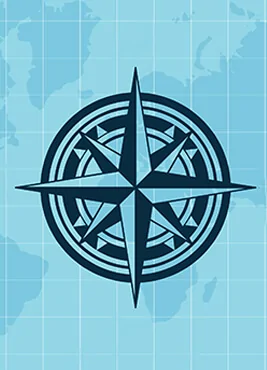Political Compass Explained
The Big Idea in 30 Seconds
- The political compass is a tool that maps political beliefs on two axes: economic and social.
- Left vs. Right = Economic policy (who controls money and resources).
- Authoritarian vs. Libertarian = Social control (how much personal freedom you have).
- You end up in one of four quadrants, each showing a unique mix of values.

What Is the Political Compass?
Most people think of politics using just “left” and “right.” That’s part of the story—but not the whole thing.
The political compass adds another important layer: how much control the government should have over our personal lives, not just the economy. This creates a two-axis grid that better shows what someone believes.
The Two Axes: Economic and Social
Economic Left vs. Economic Right
This axis runs side-to-side. It focuses on money, jobs, and ownership:
- Economic Left: Believes the government should help control wealth and support public services like healthcare and education. Think higher taxes, more social programs, and less inequality.
- Economic Right: Supports free markets where individuals and businesses decide what to do with their money. Think lower taxes, less regulation, and private property rights.
Authoritarian vs. Libertarian
This axis runs up and down. It focuses on personal freedom and government control of daily life:
- Authoritarian: Believes rules, structure, and strong leaders are needed to maintain order. The government can control aspects of life like speech, religion, or behavior.
- Libertarian: Thinks individual freedom is most important. The government should stay out of people’s personal choices.
The Four Quadrants
When you combine the two axes, you get four main political “quadrants.” Each one represents a mix of beliefs around money and personal freedom.
Authoritarian Left
Believes in economic equality through government control but also supports strict rules and order in society.
Authoritarian Right
Favors free markets but also pushes strong government control over social behavior.
Libertarian Left
Wants economic fairness but also values personal freedom. Supports things like universal healthcare and LGBTQ+ rights.
Libertarian Right
Supports both free markets and personal freedom. Thinks the government should stay small and out of people’s lives.
How the Political Compass Test Works
You may have seen the Political Compass Test online. It asks you a series of questions about economics, government power, social issues, and more. Your answers place you somewhere in the four-quadrant grid.
It’s not a perfect tool—and even the creators say it’s meant to be a conversation starter, not a label-maker. But it helps you understand your mix of beliefs more clearly than just “left-wing” or “right-wing.”
Famous Leaders and Where They Fall on the Compass
The compass isn’t just for everyday voters. Political scientists and writers have used it to map major historical and global leaders, too. Here are a few general examples:
- Authoritarian Left: Joseph Stalin, Fidel Castro
- Libertarian Left: Bernie Sanders, Noam Chomsky
- Authoritarian Right: Margaret Thatcher, Augusto Pinochet
- Libertarian Right: Ron Paul, Milton Friedman
These placements are debated and simplified, but they show how the compass compares different ideologies across time and culture.

Why the Political Compass Matters
If you've ever wondered why someone agrees with you on one issue but not another, the compass helps explain that. One person might favor free college (left economic idea), but also support gun rights (a libertarian idea). The compass shows how beliefs can mix in unique ways.
The compass helps you move beyond team sports politics. In his book The Righteous Mind, Jonathan Haidt explains that people are driven by deep moral roots. The two-axis model helps reveal these deeper values.
And if you're tired of politics feeling like yelling matches, you're not alone. In Politics Is for Power, Eitan Hersh argues that understanding real political values—not just headlines and slogans—can help people take meaningful action.
Limitations and Criticism
To be fair, the political compass has its flaws. It simplifies complex ideologies. It doesn't always account well for cultural or national differences. For example, someone in the U.S. might view universal healthcare as far-left, while in Europe it’s seen as moderate.
Wayne Brittenden’s book The Political Compass: Understanding the Spectrum of Modern Ideologies dives into how different movements don’t always fit neatly into one quadrant. But despite its limits, the compass remains one of the clearest ways to understand where you—and others—stand.
Final Thoughts
Politics isn’t just left vs. right. It’s a mix of how we think the economy should work, and how much freedom we believe people should have. The political compass gives us a better map to explore those ideas.
Take the time to learn where you fall. Not just to label yourself—but to understand your values, grow your thinking, and find where you can make real impact where it matters most.
Find your place on the compass.
Now that you understand the compass, find out where you land on the chart.
Take the Free Political Test